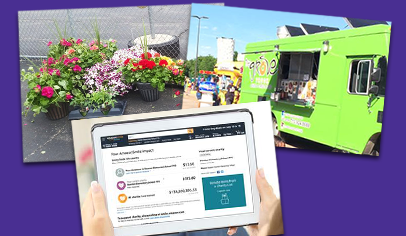It’s a classic catch-22. With deep cuts to school budgets in recent years, parent groups feel the pressure to raise more money than ever. At the same time, some PTOs and PTAs have been met with district policies that limit fundraising or require groups to share their proceeds with other schools. Why would cash-strapped school districts put limits on how much parent groups can fundraise?
What’s Going On
In many areas, parent groups and other school organizations are limited to one or two fundraisers per year to avoid exhausting the support of the school community. But in a growing number of communities, it’s considered an issue of fairness. While PTOs and PTAs in affluent communities have managed to raise more money to support their schools, the parent groups in many working-class neighborhoods have not. The result is an imbalance in fundraising that some fear has widened the gap between rich and poor schools.
Take the case of the school district for Santa Monica and Malibu, Calif. Before the district changed its policies on fundraising in 2004, it noted that some schools raised more than $1,000 per student, while others raised less than $20 per student.
“In our district, there’s a lot of diversity from school to school,” says Rochelle Fanali, president of the Santa Monica-Malibu PTA Council. “As a result, we saw some schools able to raise a significant amount of money to add programs to the school base—music, art, even professional development for teachers. It got to a point where it was significantly changing the quality of the educational experience from school to school in a single district. The promise of public education is leveling the playing field, no matter where you come from. We weren’t fulfilling that promise in our district.”
How Districts Have Responded
School districts have addressed the question of how much fundraising is too much in a variety of ways. The most common rules are about how a parent group can spend its money. But more districts are limiting the number of fundraisers school organizations can conduct per year. Some districts have policies that make a distinction between sales fundraisers and events like car washes, as well as passive fundraisers, like labels or box top collections, and set different limits on each type.
Rules have also been established in many places to limit what PTO and PTA funds can be used for. The intent is to keep a parent group at one school from funding teaching positions or special equipment while other schools go without them. In Albany, Calif., where the superintendent noted a disparity in enrichment opportunities at elementary schools, PTAs were prohibited from funding in-school enrichment such as field trips or art classes. Instead, the groups were asked to contribute to an annual giving campaign that splits proceeds among the schools.
In the Santa Monica-Malibu Unified School District, a 2004 policy required that 15 percent of PTA revenues raised be donated to a centralized equity fund. This money was distributed on a weighted formula per capita, with all 16 schools getting a cut. PTA Council president Fanali says that initially there was a lot of negative reaction to the equity fund, but once parents got used to it and realized that their school would get at least a portion of the money back, the protests dissipated.
The district changed its fundraising policy again in 2011, when new rules adopted by the school board barred PTAs and booster clubs from paying personnel costs. Donations toward personnel costs can only be raised through the Santa Monica-Malibu Education Foundation. The foundation funds programs and professional development, and the PTAs support the rest. Parents are educated about this distinction between funds raised for their school PTAs (“stuff”) and for the foundation (“staff”) and encouraged to support each.
Individual parent groups in Malibu and Santa Monica now make appeals for direct donations to the foundation, help with districtwide fundraising efforts such as a community party on the Santa Monica pier, and donate part of their own fundraising proceeds as they see fit. It’s easy to see the foundation funds at work—in the form of literacy coaches and training for classroom assistants, for instance.
What It Means for Your Group
With the wide variety of parent group fundraising and spending policies across the country, it’s important to make sure you understand your district’s policies before planning your fundraisers and making decisions about how to spend your group’s money. Start by getting a copy of your district’s policies from your principal or district office.
If your district does limit you to a few fundraisers a year, it doesn’t have to be a big negative. Although it may not seem like it, such limits can actually help strengthen fundraisers. Groups that continually fundraise find that fundraising fatigue sets in, and financial support erodes over time. And there’s another advantage to having limits on fundraising: Your parent group leaders can spend less time on fundraisers and more time on building the group’s volunteer base.
If your district does limit fundraising activity, talk with a school district official to make sure you understand the policy. Do the restrictions apply to passive fundraisers like label and box top collections? Where do ongoing fundraisers like spiritwear or concession stands fit within the policy?
Make the most of your limited fundraising with careful planning. Seek out advice from your fundraising company representative on how to maximize sales. Take the time to look for business sponsors for your events.
If your parent group is in a situation where you’re asked to share fundraising proceeds, appoint a liaison to the district fund or education foundation to promote good communication. Find out how much of the money your group contributes may be coming back to the school, and adjust your PTO’s budget accordingly.
Resist the temptation to boost your income by adding more fundraisers. Instead, work to maximize the profits of your regular fundraisers. Also keep in mind the many ways your parent group can help your school that don’t involve money, such as organizing library volunteers or scheduling reading tutors.
With fundraising equity getting so much attention, it’s a good time to think about where your parent group fits in. If your group struggles with fundraising, you might discuss the issue of fundraising equity with the school district. Or you could seek out an area parent group to partner with (see “A Different Approach,” right). If your group’s fundraising efforts are strong, think about what you can do to help other groups. Perhaps it’s providing volunteers for the other school’s events or working together on a community fundraiser. Whichever situation your parent group finds itself in, remember that fundraising is only one piece of the important work you’re doing for your school.
A Different Approach
North Carolina’s Charlotte-Mecklenberg Schools have taken a more low-key approach to fundraising inequities. Instead of pooling funds, they pair parent groups that want to work together to share resources. The program, called SchoolMates, is about 12 years old and is currently administered by Ana Brown, the district’s volunteer coordinator. A PTO or PTA must request the match, which is then fostered by Brown.
Once matched, representatives from each school meet to decide how they can help each other. “We always try to make it a two-way street,” Brown says. For example, a school with a lot of parent involvement might offer expertise and volunteers while a less advantaged school might invite teachers from the other school to some of the training their teachers get through Title I funding. Sometimes the schools hold joint fundraisers like a staff versus staff basketball game, or one school might help the other put on a book fair. Or sometimes one school will donate the profits from a particular fundraiser to the other school.
Assistance goes beyond fundraising, including advice on how to start a parent group or a coat drive for needy students. “Money is a very, very, very small part of it,” Brown says. “Many don’t do that. They just share the most important resources—the parents. The monetary part that happened is very small and is not what the partnerships are about. It’s about sharing the resources both schools have.”

























